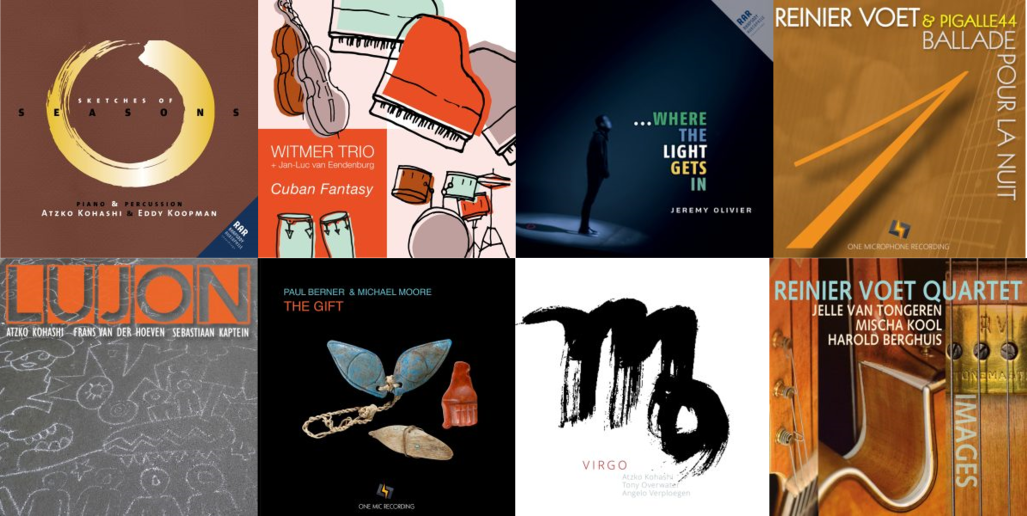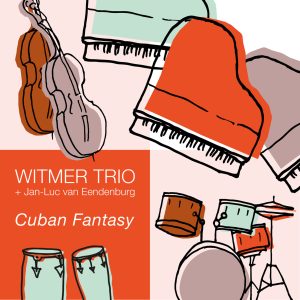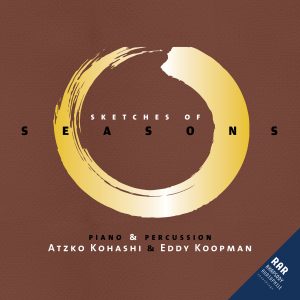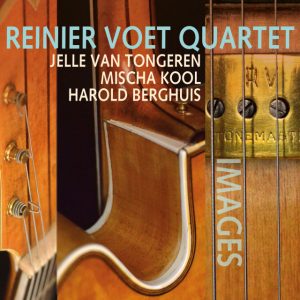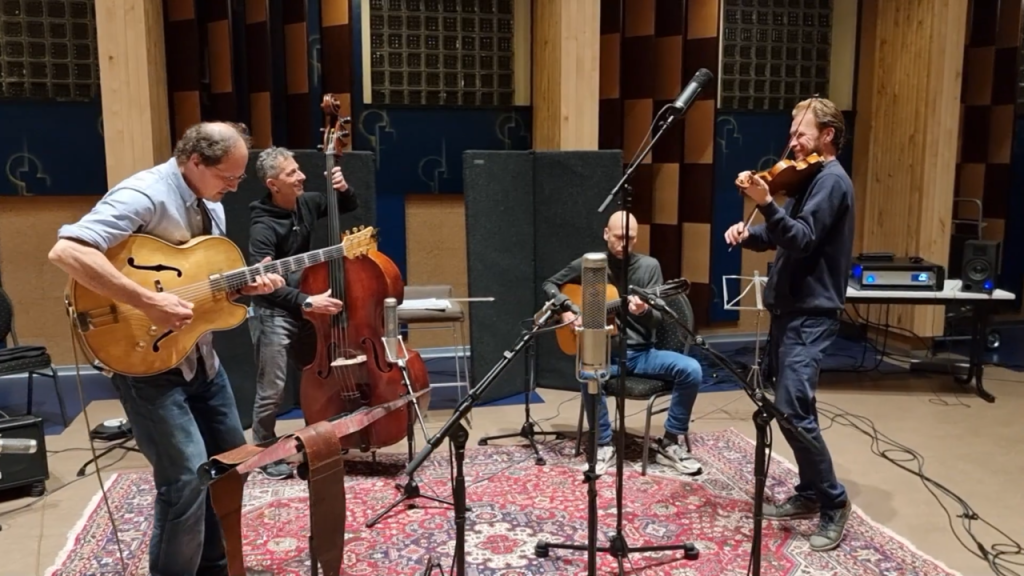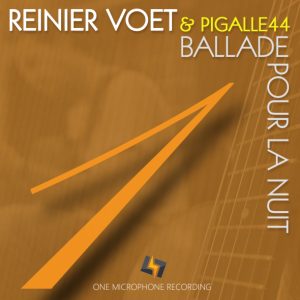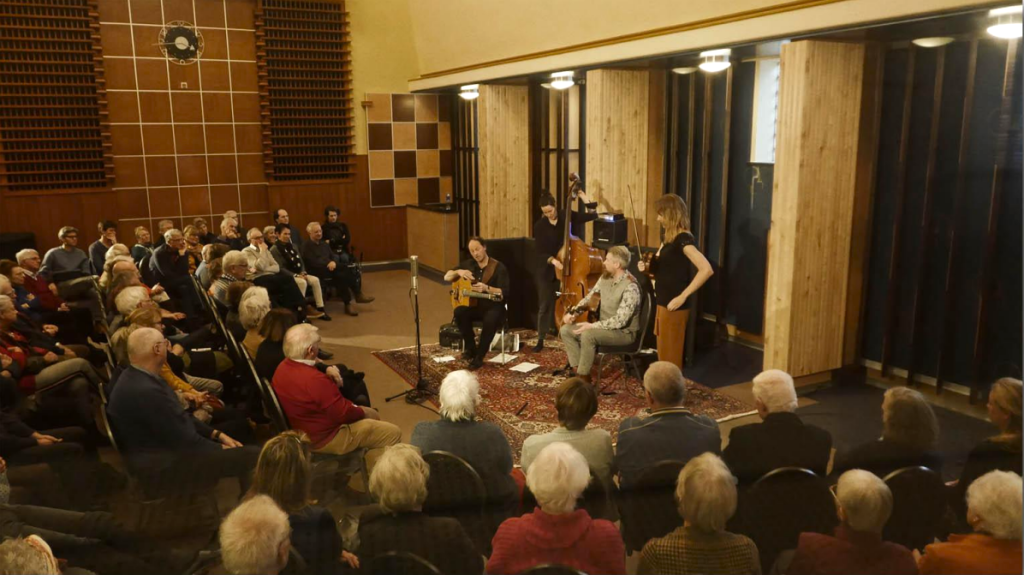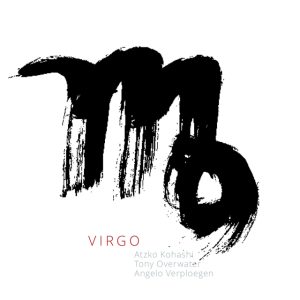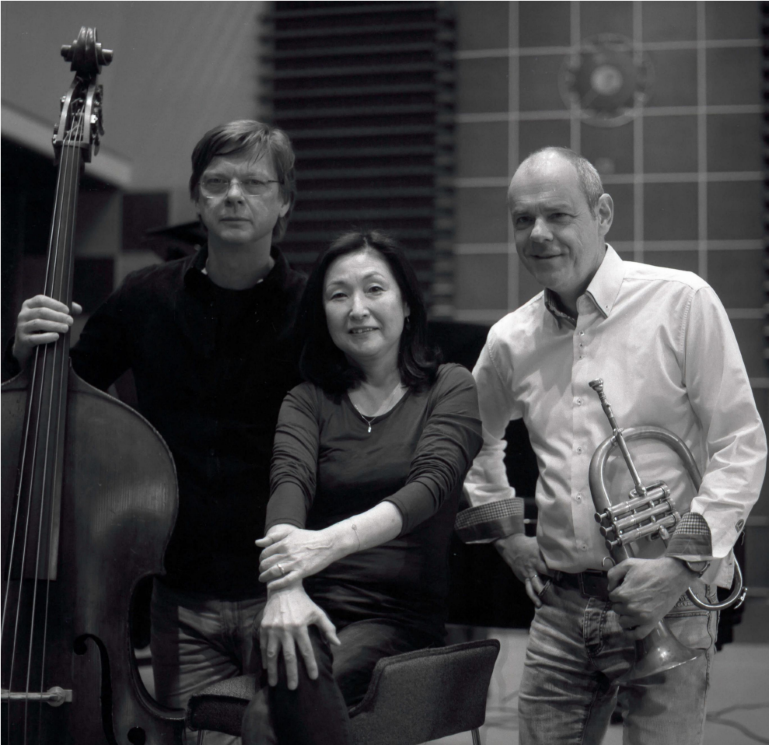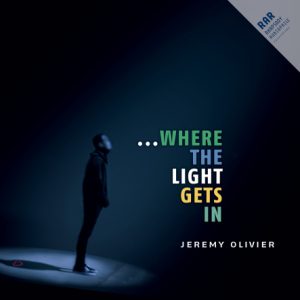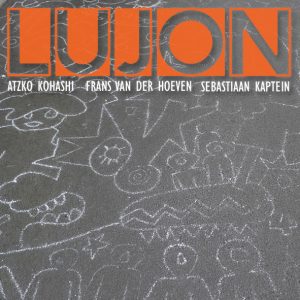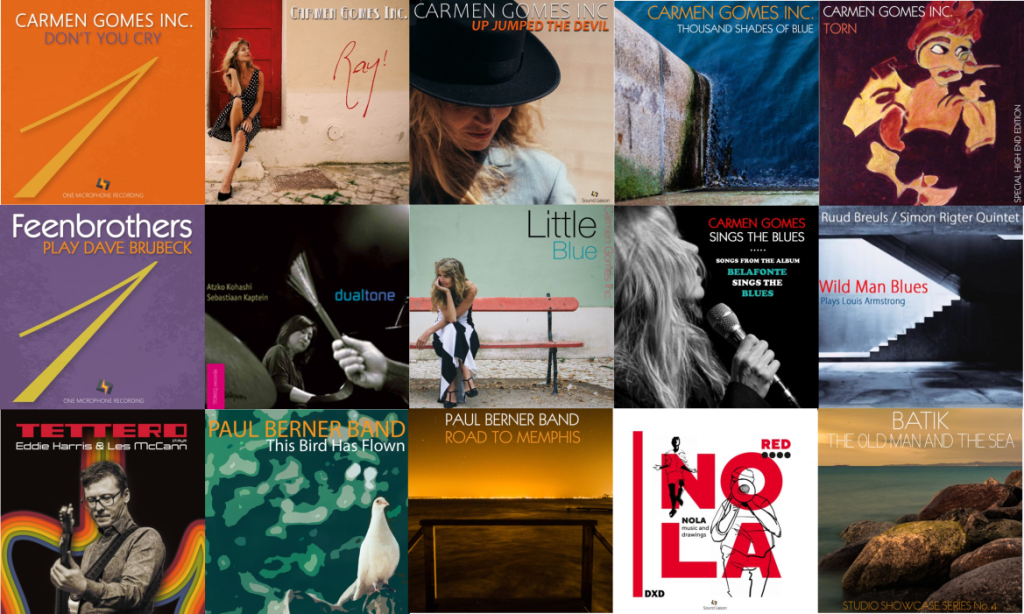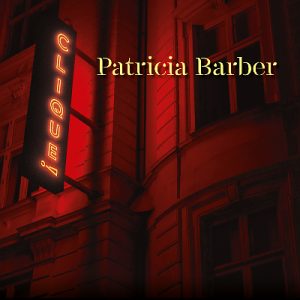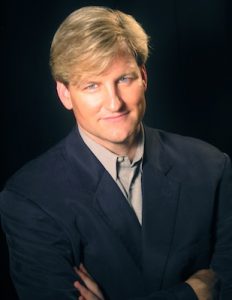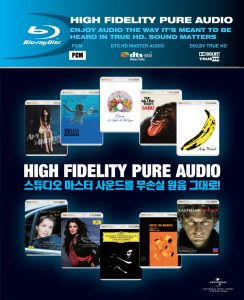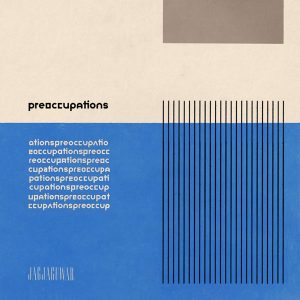I've mentioned recording engineer Frans de Rond and the excellent recordings he makes for Sound Liaison multiple times over these past four years. Not long ago I wrote about several albums from the quite exceptional Carmen Gomes, Inc: Up Jumped the Devil (HERE), Ray! (which you'll find HERE), and Little Blue (HERE). And most recently, I wrote about Growing Up by Simon Ritger and Wild Man Blues Plays Louis Armstrong (HERE). These are all excellent albums that are very well recorded.
What I haven't done is actually talk more broadly about the work of of Frans de Rond, his partner and producer Peter Bjørnild, and their recording label Sound Liaison. This article is a start at correcting my oversight. I hope you will follow along with me as I discuss several additional albums I like and why I so much admire Frans de Rond's work.
Cuban Fantasy, Witmer Trio, featuring Jan-Luc can Eendenburg. Sound Liaison 2023 (DXD, 32bit) HERE
This album marks a return to the origins of Witmer Trio. Delving into the salsa, cha-cha, bolero, bachata, and cumbia traditions of the music of Latin America. The Trio is joined by special guest Jan-Luc van Eendenburg on congas and bongos, completing the album’s Latin flavor.
The music is engagingly and creatively arranged, and all is superbly well performed. The addition of Jan-Luc van Eendenburg's congas and bongos add a delightful further flavoring and are tastefully blended into the overall musical ethos of the ensemble. There is a somewhat mellow, reflective tone to the entire album, which makes for very relaxed and enjoyable listening. With considerable variety across the selections I found myself constantly engaged in the melodies, rhythms and interplay of the artists. The songs with a driving beat and greater urgency, like La Mulata Rumbera, added just enough spice to keep everything interesting while not being completely out of place. All of this is just very nicely done!
The recorded sound quality is excellent, as always from Frans de Rond. Yes, this is multi-mic'd. But it is so skillfully done that you'd not notice it. Instead, what you have is a fully integrated soundscape encompassing four musicians and their instruments—nothing spot lit, nothing sounding "out of whack." And this result my friends, reflects very skillful placement to manage the various phase characteristics so all sounds seamless as one. Quite an accomplishment!
About the recording setup, producer Peter Bjørnild writes: "When creating the soundscape, we devoted significant time to achieving an ideal balance. We placed a pair of Josephson C700S in the 'sweet spot' in MCOStudios’ Studio 2 before incorporating spot microphones. Our goal was to create a sound field that felt intimate yet retained sufficient depth to evoke a visual representation of the instruments." It is this sensitivity to the sound and this attention detail that makes these Sound Liaison recordings so very good and so very special!
Sketches of Seasons, Atzko Kohashi and Eddy Koopman. Sound Liaison 2020 (DXD, 32bit) HERE or HERE
Jazz pianist Atzko Kohashi is a continuing source of amazement for me—she is so versatile, so flexible! Here, she partners with percussionist Eddy Koopman to create an album of great nuance and immersive engagement. Riffing off the theme of four seasons, the artists weave a tapestry of sound across the four movements of the album. As always, Atzko Kohashi's touch is delicate, deliberate, carefully calibrated to the emotional content she wishes to convey. Eddy Koopman brings a similar delicacy and intention with his use of bells, brushed gongs and cymbals, and drums of all types. I can't begin to identify all of the instruments he uses to bring out the most subtle accents that emphasize, complement and contrast with Kohashi's piano—it is all a delightful interplay of sounds and timbre, superbly judged and timed. Kohashi's magical touch keeps all moving ahead, weaving the melody and enticing one to follow along.
The recording is filled with detail and color. One clearly hears the stroke on drum skin, the deep resonance of larger drums, the sharp percussive strikes on wood, the reverberation of piano strings above the sound board—it is deliciously close to being live. This is a tour de force in recording quality that captures the full resonance and timbre of an exceptionally wide range of both piano and percussion instruments. It is a listening session that one is not often privileged to experience in the home. And, unlike many efforts at recording percussion, this album is musically satisfying and engaging.
High marks to the recording and mastering team. Even higher marks to the musical sensibilities of Atzko Kohashi and Eddy Koopman. Exceptionally well done all around!
Images, Reiner Voet Quartet. Sound Liaison 2022 (DXD) HERE
This album is everything I look for in a live jazz album: spontaneous, explorative, complex, occasionally playful, and supremely well recorded. There is nice depth to the interactions of the musicians—nothing superficial, but still engagingly fresh. It is one of those albums that you start playing and don't want to stop. Plus, I find myself always trying to look around the corner to see where they will be taking me next.
It is one of Frans de Rond's "Arch" style recordings, meaning that it starts with a single musician in front of a single mike. Then other musicians join in the next tracks and the number of microphones may increase accordingly, then it finishes with that single musician and a single microphone once again. All forming an arch of sonic complexity. But always sounding live, non-processed, and with perfect phase alignment throughout. By no means easy to accomplish! This outcome requires a very skilled balance engineer who listens carefully to the results being achieved.
Ballade pour la nuit, Reinier Voet & Pigalle44. Sound Liaison 2019 (DXD) HERE
This recording is a beautiful example of Frans de Rond's "single microphone" series of recordings where the entire album is from a single stereo microphone. The image placement from these single microphone recordings is simply astonishing. They remind me of many of Kavi Alexander's recordings (Water Lily Acoustics) in their solidity of image and focus. And that is high praise, my friends.
Captured live before a audience, the performances vibrate with energy and a good swing. Reinier Voet's guitar is upfront but does not overly dominate the proceedings. The members of Pigalle44 (violin, guitar and double bass) contribute a strong rhythmic vitality throughout, with excellent solos interspersed. For nearly 45 minutes, the quartet moves from strength to strength.
Writes Reinier Voet: "The roles in this quartet are clearly defined, maybe you could say that the solid rhythm guitarist Jan Brouwer and steady bassist Jet Stevens represents the tradition, they know how to hold a groove, they have a deep pocket, the beat is completely secure in their hands. Karin van Kooten’s playing is refreshing: she has her own voice." And this holds quite consistently across this performance before a very respectful and appreciative audience.
And the sound quality captured in this recording? Oh, just wow. The single Josephson C700S stereo microphone delivers phase coherence, perfect imaging, great sense of depth, and superior realism. As Fran and producer Peter Bjørnild comment, this live recording process before an audience "forces the band being recorded to really play. There is nowhere to hide, no fixing it in the mix, so this is where it helps being a real band."
Live recording session in MCO Studio 2, Hilversum, The Netherlands, on January 13, 2019.
Virgo, Atzko Kohashi, Tony Overwater, Angelo Verploegen. Sound Liaison 2018 (DSD256, DXD) HERE
What a great lineup of musicians: Atzko Kohashi on piano, Tony Overwater on double bass, and Angelo Verploegen on flugelhorn. These folks together are about as sensitive and innovative a group as jazz ensembles come. I've been listening to these artists in combination with other performers on various recordings for several years now and I always find their work interesting and innovative. To hear them together as an ensemble on this 2018 release, transferred from analog tape, is a real treat!
This is an intimate recording, made even more so by the combination of instruments and the unadorned playing style adopted by the musicians. Recorded before a live audience, direct to a 2-track Studer A80 tape recorder in a totally analog recording chain, the sound is as alive and fresh as one can possibly achieve. No overdubs, no retakes, no post processing, this recording is just like being in the audience for these performances. The DSD256 transfer from the tape is just marvelous.
Recording live forces musicians to really create on the spot. And when it is recorded live to analog tape (as here), it is not possible to repair mistakes. The trio chose a repertoire of originals and classics. As one listens to the album, it is a wonderful experience to hear how the trio reshapes songs into a new, and completely organic, whole. All of the other formats are converted from the original 2-track analog tape.
Recorded in 2018, Virgo by the Kohashi-Overwater-Verploegen trio was the first release from Sound Liaison in a new series of albums licensed from Rhapsody Audiophile Recordings (RAR). RAR is an initiative of audiophile audio guru Harry van Dalen, producer and high-end tuning expert Michael van Polen and recording engineer and Frans de Rond. In this series, RAR records direct to a 2-track Studer A80 tape recorder. Using a completely analog signal chain to generate an organic, natural sound with a well defined sound stage.
Tony Overwater, Atzko Kohashi, Angelo Verploegen
Where the Light Gets In, Jeremy Olivier, vocals and guitar, and Mike del Ferro, piano. Sound Liaison 2022 (DSD256, DXD) HERE
Another release in the Sound Liaison collaboration series with RAR (see above) is this album with Jeremy Olivier and Mike del Ferro. Cape Town singer songwriter Jeremy Oliver has been around for a while. He has collaborated with Hugh Masekela, Ladysmith Black Mambazo, George Benson, Katherine Jenkins and Daniel Bedingfield.
Mixing originals with interpretations of songs from Sting, Morrison and Arlen, this is a largely quiet introspective album with spare instrumental accompaniment that nicely complements the songs while maintaining focus on the vocals and lyrics. Multiple microphones are used in this recording, but the result is nonetheless classically Frans de Rond purity with excellent image solidity. Somewhat experimentally, the original DXD recording was then mixed and mastered to 2-track analog tape ("for some additional mojo" per the Sound Liaison team) to create the final edit master for the various digital formats. As I understand it, a master DXD MTFF file was then created from the analog tape and that DXD MTFF file is the source for all the other digital formats (as is typical with digital releases not identified as Pure DSD).
Regardless of the details, the resulting sound quality is most enjoyable, very intimate, very delicate. And highly recommended.
The Gift, Michael Moore & Paul Berner. Sound Liaison 2022 (23-bit, DXD) HERE
The excellent musicianship of Michael Moore, clarinet, and Paul Berner, piano, bring life and a bit of a thrill to this album. As producer Peter Bjornild says "It’s magical listening to Michael Moore and Paul Berner play. The music seems to flow in a natural unhindered stream, each note being an obvious continuation of what was played before."
Featuring a rich collection of standards including songs by Richard Rogers, George and Ira Gershwin, Charlie Parker, Irving Berlin, Bobby Troup, Mel Torme, Sammy Fain, and Oscar Hammerstein, The Gift is truly that—a gift of marvelous music beautifully played by this excellent duo.
Lujon, Atzko Kohashi, piano, Frans van der Hoeven, double bass, Sebastiaan Kaptein, percussion. Sound Liaison 2014 (96kHz original format, with higher resolutions from NativeDSD's Higher Rates Program) HERE
Okay, this recording dates from a few years ago and it's only 96kHz in its original recording format, but please bear with me. First and most importantly, it's Atzko Kohashi! She is one of the finer jazz pianists performing and recording today. And second, it is a truly excellent recording from a bit earlier in Frans de Rond's recording career. The sound has a warm, somewhat reverberant, overall ambience that really pulls the performers right into my listening space. And the music is filled with Atzko's typical inventiveness and ear for great synergies of sound, melody and timing.
The album has only recently found it's way into the NativeDSD catalog because of their change in policy to include lower rate PCM recordings (96kHz and above now). So, many thanks to NativeDSD for this change in their policy (over which they agonized for a long time). When this and so many other excellent albums now show up in their catalog, in sound quality that I can trust, I think we all win. Highly recommended!
What I hear consistently across the albums from Sound Liaison albums
If there is one consistent factor that I hear across the various Sound Liaison albums, and that I consider a signature of Frans de Rond's recording aesthetic, it is the absolute phase coherence he achieves. Regardless of microphones used, the sonic image is precisely rendered with tremendous solidity and three dimensionality. Whether it is a solo performer or an ensemble, whether it is a single microphone recording or a multiple microphone recording, the specificity of image placement is outstanding, rock solid, and unusual to hear so clearly. One can visualize the instrument placement precisely. Frans is obsessive about this. And his effort pays off in the results he achieves.
It is this ability to make sound visual is that makes his audio recordings so unique.
But this precise imaging is the foundation for the great results he achieves. What builds upon this foundation to create truly great recordings is the supremely natural sounding capture of the timbre of the instruments—a result I attribute in part to his selection of microphones, but mostly to his attention to trying to capture as close to the natural, organic sound of the instrument as possible through both selection of recording venue, placement in the room, and selection of microphones. His choice to use as his primary microphone the remarkable Josephson C700S may well be a significant factor today.
And, finally, Frans and co-founder Peter Bjørnild, are extremely cautious in choosing which musicians they will work with. As Frans says in the interview with David Hopkins of NativeDSD:
"We always say that the music we record is also music that we will put on at home just to enjoy. If it’s not music that we enjoy listening to then we don’t work on it. Sometimes we have to refuse projects—people may come to us with a demo and ask if it’s something we would like to work on and we literally ask ourselves that question: would I put this on and listen to it myself? If the answer is no then we have to pass on it."
For more about Frans and Peter, plus their thoughts about various albums, artists and recording technique, I recommend reading the full interview by David Hopkins, HERE.
Frans de Rond's Recording Style
As a friend commented to me about Frans de Rond's recordings "I just love his recording style; he’s got this sense of almost Zen minimalism but you can hear how he thinks like a musician during sessions." And I think this comment is well on point. Frans most frequently (always?) records small ensembles and he concentrates on selecting venues with really nice natural acoustics. His recordings all sound like there is a real synergy between him and the musicians. And his style of recording is consistently to be completely unnoticed as the recording/mastering engineer capturing the music created by the artists. He seems to adopt an attitude of "get out of their way and let them play"—that his best contribution to the end result is to be unnoticeable. But, of course he is very much noticed! All due to his intention to put the musicians first. And this is not true of a lot of recording/mastering engineers.
Try some of the albums I've listed above and you'll hear what I mean.
In addition to Frans' "standard" recordings, he also has two different series of recordings where his art as a recording engineer is given some prominence. These are his One Microphone Recording Series and his Arch Recording Series. Both very much add to my enjoyment of the albums and I encourage you to look for these.
The One Microphone Recording Series
In the One Microphone Recording series, Frans uses a single Josephson Engineering C700S stereo microphone throughout the recording. That single point of capture means excellent phase coherence and thus excellent and rock solid placement of the musicians in the sound field. This single point of capture delivers an immediacy and organic naturalness that is hard to beat.
The various internal capsules in this microphone (see HERE for technical details) mean that Frans can select different microphone patterns while maintaining a single point of sound capture.
The Arch Recording Series
In the Arch Recording Series, Frans creates an album that starts with a single performer using a single microphone point of capture using the Josephson C700S microphone. Then gradually more musicians may be added to the stage, with additional microphones possibly added as the music demands. The challenge as microphones are added is to maintain that absolute image stability that comes only with excellent phase coherence across all the microphones. This is the engineer's challenge. Frans succeeds in this where many other recording engineers lose it. The album will then complete the "arch" by closing with a single performer and single stereo microphone once again. It is an artistic artifice, to be sure. But it makes for a fun listening experience across that arch of musical performance and sound.
Sound Liaison albums I've written about in prior articles that you should check out:




